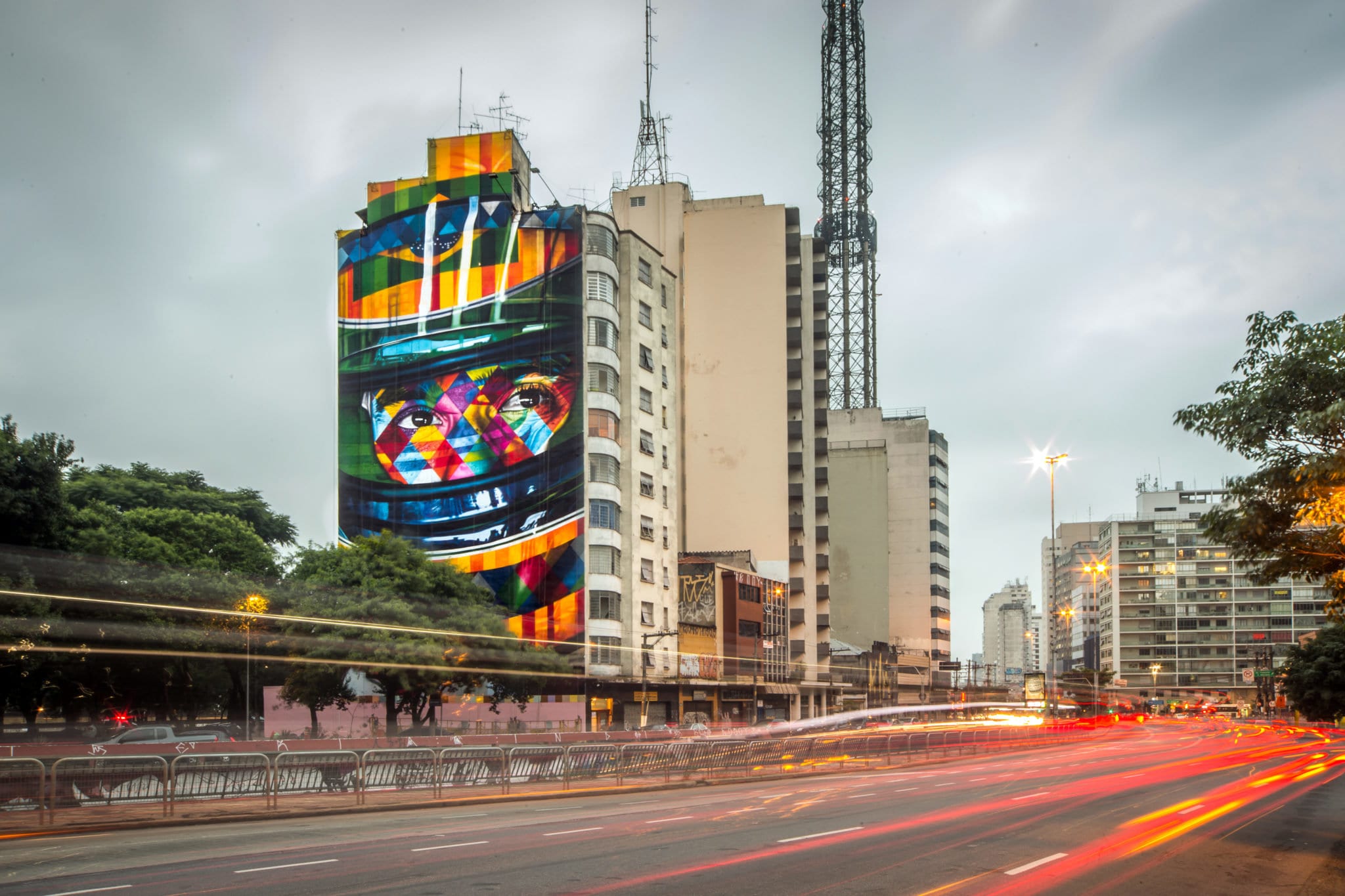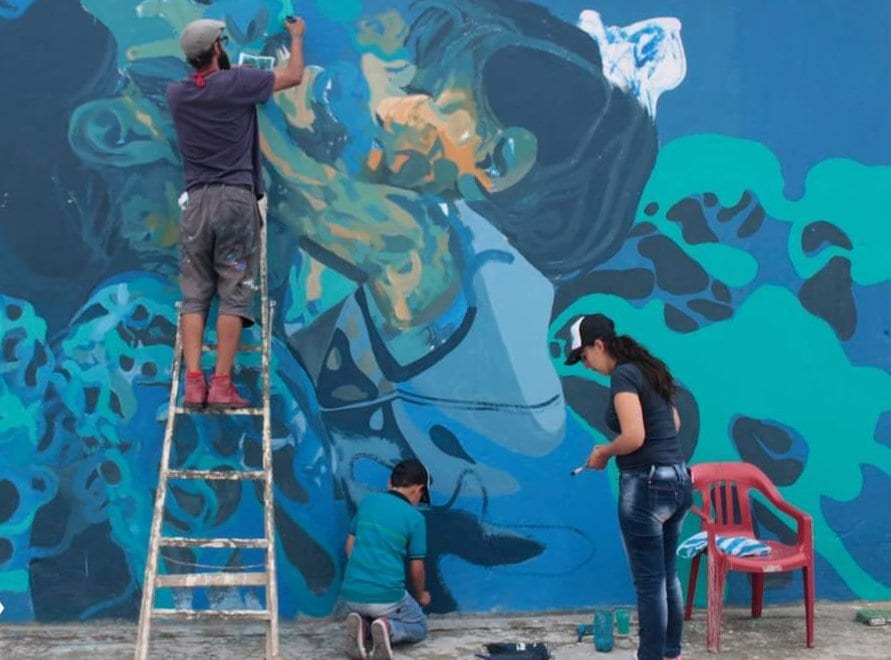Eduardo Kobra Begins Restoration Movement for his Works in São Paulo
The famous Brazilian muralist Eduardo Kobra started a new project, the restoration of his main works. Together with his team a number of pieces will be touched up and repainted starting with Lenda do Brasil, made in honor of F1 driver Ayrton Senna. The mural, showing the driver with a helmet and a triumphant look, is one of Kobra’s favorite due to the fact he considers Senna as one of his biggest idols. The restoration started in the last week of November 2020, with the next work on the list being his vibrant Oscar Niemeyer mural, in the Paulista Avenue of São Paulo.
Kobra has stated that, although he isn’t a big fan of sports, Senna in particular is one of his greatest idols and he finds inspiration in his example of determination and perseverance; an inspiration that he has paid homage to by painted 12 murals of the three-time F1 world champion; the most recent being painted in march of this year in the Interlagos race track of São Paulo.
For the initial phase of the project, Kobra looked to Audi Brasil, a company that has a historical connection with the world champion, and they welcomed the idea of making this first stage of the project feasible, aiming to start a movement that plans to change how street art is perceived by current and future generations.
This appears to be one of Kobra’s first movements for the restoration, and preservation of murals, that have become a true heritage of the cities they belong to and, according to the artist, deserve the same care as buildings, public monuments, and any work of art.
Chinácota in Colombia Begins the Art Meetup "Sembradores de Paz"
From November 21 to 30, the Colombian municipality of Chinácota in Norte de Santander will host “Sembradores de Paz” (in English, “Sowers of Peace”), an international event that will receive artistic and cultural representatives from South American countries, and other regions of Colombia. The meeting is part of the project Encuentro Internacional de Muralismo y el Arte Público that is holding its fifth annual edition.
The objective of the event is to promote integration between peoples, as well as to involve the community in activities that help evolve the territory in a fun and aesthetic manner. At the same time, they seek to leave a strong message of peace, by linking the theme of the event with the commemoration of the signing of the Peace Agreement in the locality in 1902, after several strong political and social conflicts that took part in The War of The Thousand Days; since then, the municipality of Chinácota, has been characterized as the “national capital of peace.”
Based on these historical events and as a sign of tribute, artists and cultural managers of the region began, in 2015, the “Encuentro Internacional de Muralismo y el Arte Público”, a peace project that seeks integration of people, and the transformation of spaces into protective and cohesive environments.
The event has already started and will consist of 30 artistic interventions, between murals, musical presentations, and workshops which progress will be updated through the Instagram profile: https://www.instagram.com/encuentrodemuralismo/
CURA Festival closes its 5th edition with 4 new murals in Belo Horizonte, Brazil
With the motto “2020 tem CURA” (translated as “2020 has a CURE”), one of the biggest public art festivals in the Brazilian “CURA” (Circuito Urbano de Arte) adds to the city of Belo Horizonte 4 gigantic new murals loaded with representative flavor to further color the city. In this year’s fifth edition, due to the Covid-19 pandemic, debates and workshops took place online, and even amid the pandemic, the five producers of the festival managed to successfully mobilize several in-person activities.
Another novelty of this edition of Cura was the use of an online poll to choose one artist residing in Brazil for the opportunity to paint the facade of one of the buildings in his/her locality.
The artists who made up the painting team in the gables of the Belo Horizonte buildings were Lídia Viber, Robinho Santana, Daiara Tiukano, and the one chosen from the online poll, Diego Mouro whose works addressed themes such as black and indigenous culture and heritage.
The Cura festival ran until October 4th, and in addition to producing new public artworks to be admired in the streets of the city, the circuit maintained and updated its own YouTube channel.


